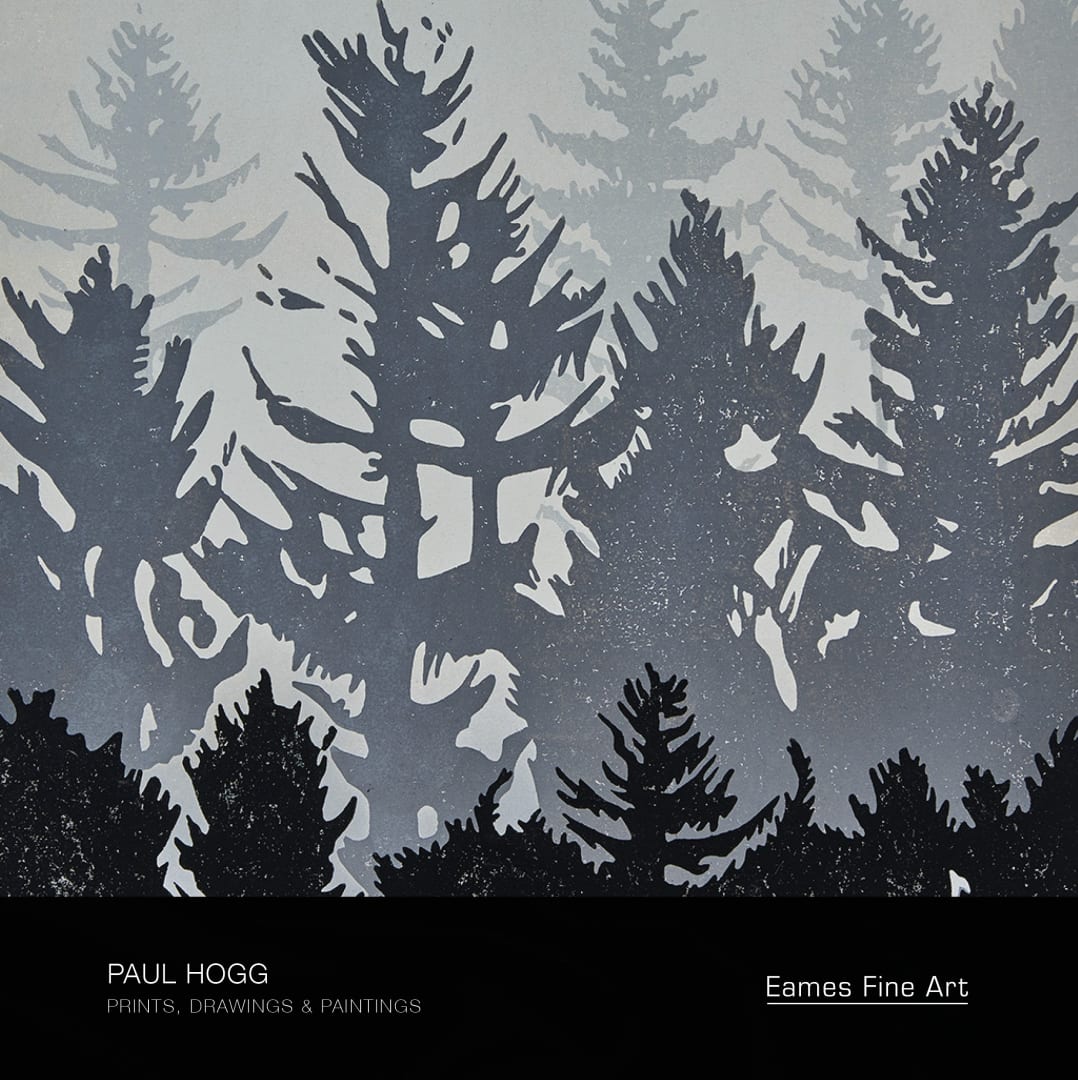Dimensions: 210 x 210
Pages: 32
You can view the entire catalogue online here for free by clicking on view sample pages, but we would be delighted if you would like to purchase a hardcopy.
Introductory Essay
To Paul Hogg, artistic creation is first and foremost about formal considerations: colour, space, surface, texture and composition. These are dependent on the qualities of the medium used, which for Paul is primarily linocut, but also screenprinting, painting and drawing. Finding the perfect compositional balance can be a challenge, but it is one that Paul relishes: the colours and shapes within a piece must work together to build up a visual power that does not lessen over time. Paul knows that his artworks are finished when he can come back to them months or years later without any of the impact, emotion, poise or beauty being diminished. This aesthetic permanence is on display in Paul’s first exhibition at the Eames Fine Art Print Room. Even though Paul’s primary focus is on formal elements, these are still representational works, and therefore there are still narratives, real or imagined, that appear throughout this show. The subject matter is often ambiguous, but background and biographical information help to clarify some of the implicit meanings and universal ideas in these works that come from Paul’s own experiences of nature and what it means to be human.
Eames Fine Art clients may be most familiar with Paul’s crow works – such as Tree, Crows, Sun and Crows in a Tree. With pleasing compositions and vibrant colours, these pieces certainly fulfil Paul’s requirement of sustaining visual and emotional impact. These works are not just about the figures of the crows and trees, but also the beguiling shapes that wind makes as it moves with and around these beings in nature. Growing up in the countryside near Leicester, Paul has an early memory of crows being blown about by blustery weather (and he even had his own pet crow for a while). Now, through his art Paul feels the need to translate that amorphous thought of the past into a plastic fact. It is not necessarily a story, or a linear narrative – just an affecting visual memory. These crow works are an example of how Paul’s art, even though rooted in significant form and aestheticised compositions, can indeed be tied back to a distinct and resonating moment or memory.
Another biographical anecdote is embodied in the image of the shed that appears throughout Paul’s work. When he was a young teenager, he kept kestrels in a structure similar to the one shown in his linocuts and this small building became a place of happiness and fond memories. It has therefore become a charged setting for Paul, representing a myriad of larger ideas. The artist himself is reflected in the shed’s window in Reflection in the Window of a Shed, perhaps alluding to a loss of childhood innocence and contentment. In this piece the artist is firmly outside of the building, unable to enter it, but his longing to do so is readily apparent in his reflection.
This show oscillates between sheer optimism, in Blackbird in a Tree, Singing, and bleak destruction, in To the City. It is truly impressive when an exhibition can encompass such a gamut of emotions in its artworks, and it is the intense, spiritual, but often fraught relationship between humans and nature that provides the scaffolding for these feelings. This range of emotion and messages shows us not only what Paul can do with his mastery of artistic techniques and composition, but it also demonstrates the extent to which the natural world, in its simplicity and symbolism, can affect how we feel and can bring back memories deep within our personal histories.
Christine Slobogin, May 2021

